The Influence of Environments on the Intensity Change of Typhoon Soudelor
Abstract
1. Introduction
2. Data and Methods
2.1. Data Sources
2.2. Along-Track Environmental Values
2.3. A Regression Model to Assess the Environmental Contributions to Intensity Change
3. Results
3.1. Environment during Formation (30 July 2015)
3.2. Environment during Intensification (Aug/01/00:00 to Aug/03/18:00)
3.3. Environment during Weakening (Aug/03/18:00 to Aug/08/00:00)
3.4. Estimation of the Contributions of Environmental Parameters to Soudelor’s Intensification and Weakening
3.5. The Low Vs < 4 m/s Pocket South of Japan
4. Discussion
5. Conclusions
Author Contributions
Funding
Institutional Review Board Statement
Informed Consent Statement
Data Availability Statement
Acknowledgments
Conflicts of Interest
References
- Gray, W.M. Tropical Cyclone Genesis; Report, No. CSU-ATSP-234; Dept. Atmos Sci Colorado State University: Fort Collins, CO, USA, 1975; 121p. [Google Scholar]
- Emanuel, K.A. An air-sea interaction theory for tropical cyclones. Part I: Steady-state maintenance. J. Atmos. Sci. 1986, 43, 585–605. [Google Scholar] [CrossRef]
- Bister, M.; Emanuel, K.A. Dissipative heating and hurricane intensity. Meteorol. Atmos. Phys. 1998, 65, 233–240. [Google Scholar] [CrossRef]
- Gray, W.M. The formation of tropical cyclones. Meteor. Atmos. Phys. 1998, 67, 37–69. [Google Scholar] [CrossRef]
- Gray, W.M. Global view of the origin of tropical disturbances and storms. Mon. Wea. Rev. 1968, 96, 669–700. [Google Scholar] [CrossRef]
- Zehr, R.M. Environmental vertical wind shear with Hurricane Bertha. Wea. Forecast. 2003, 18, 345–356. [Google Scholar] [CrossRef]
- Lin, I.I.; Wu, C.C.; Emanuel, K.; Lee, I.H.; Wu, C.R.; Pun, I.F. The interaction of Supertyphoon Maemi (2003) with a warm ocean eddy. Mon. Weather Rev. 2005, 2635–2649. [Google Scholar] [CrossRef]
- Paterson, L.A.; Hanstrum, B.N.; Davidson, N.E.; Weber, H.C. Influence of Environmental Vertical Wind Shear on the Intensity of Hurricane-Strength Tropical Cyclones in the Australian Region. Mon Weather Rev. 2005, 133, 3644–3660. [Google Scholar] [CrossRef]
- Zeng, Z.; Wang, Y.; Wu, C.C. Environmental dynamical control of tropical cyclone intensity—An observational study. Mon. Weather Rev. 2007, 135, 38–59. [Google Scholar] [CrossRef]
- Mainelli, M.; DeMaria, M.; Shay, L.K.; Goni, G. Application of oceanic heat content estimation to operational forecasting of recent Atlantic category 5 hurricanes. Weather Forecast. 2008, 23, 3–16. [Google Scholar] [CrossRef]
- Hendricks, E.A.; Peng, M.S.; Fu, B.; Li, T. Quantifying environmental control on tropical cyclone intensity change. Mon. Weather Rev. 2010, 138, 3243–3271. [Google Scholar] [CrossRef]
- Chen, X.; Wang, Y.; Zhao, K. Synoptic flow patterns and large-scale characteristics associated with rapidly intensifying tropical cyclones in the South China Sea. Mon. Weather Rev. 2015, 143, 64–87. [Google Scholar] [CrossRef]
- Sun, J.; Oey, L.; Xu, F.; Lin, Y.C. Sea level rise, surface warming, and the weakened buffering ability of South China Sea to strong typhoons in recent decades. Nature Sci. Rep. 2017, 7, 7418. [Google Scholar] [CrossRef] [PubMed]
- Balaguru, K.; Foltz, G.R.; Leung, L.R.; Hagos, S.M.; Judi, D.R. On the use of ocean dynamic temperature for hurricane intensity forecasting. Weather Forecast. 2018, 33, 411–418. [Google Scholar] [CrossRef]
- Shay, L.K.; Goni, G.J.; Black, P.G. Effects of a warm oceanic feature on Hurricane Opal. Mon. Weather Rev. 2000, 128, 1366–1383. [Google Scholar] [CrossRef]
- Chang, Y.L.; Oey, L.Y. Interannual and seasonal var-iations of Kuroshio transport east of Taiwan inferred from 29years of tide-gauge data. Geophys. Res. Lett. 2011, 38, L08603. [Google Scholar] [CrossRef]
- Chang, Y.L.; Oey, L.Y. The Philippines–Taiwan Oscillation: Monsoon like interannual oscillation of the subtropical–tropical western North Pacific wind system and its impact on the ocean. J. Climate 2012, 25, 1597–1618. [Google Scholar] [CrossRef]
- Chelton, D.B.; Schlax, M.G.; Samelson, R.M. Global observations of nonlinear mesoscale eddies. Prog. Oceanogr. 2011, 91, 167–216. [Google Scholar] [CrossRef]
- Good, S.A.; Martin, M.J.; Rayner, N.A. EN4: Quality controlled ocean temperature and salinity profiles and monthly objective analyses with uncertainty estimates. J. Geophys. Res. Oceans 2013, 118, 6704–6716. [Google Scholar] [CrossRef]
- Sun, J.; Oey, L.Y. The influence of ocean on Typhoon Nuri (2008). Mon. Weather Rev. 2015, 143, 4493–4513. [Google Scholar] [CrossRef]
- Emanuel, K.A. Environmental factors affecting tropical cyclone power dissipation. J. Clim. 2007, 20, 5497–5509. [Google Scholar] [CrossRef]
- Camargo, S.J.; Sobel, A.H.; Barnston, A.; Emanuel, K. Tropical cyclone genesis potential index in climate models. Tellus 2007, 59A, 428–443. [Google Scholar] [CrossRef]
- Price, J.F. Metrics of hurricane–ocean interaction: Vertically-integrated or vertically-averaged ocean temperature? Ocean Sci. 2009, 5, 351–368. [Google Scholar] [CrossRef]
- Kobashi, F.; Kubokawa, A. Review on North pacific subtroipical countercurrent and subtropical fronts: Role of mode waters in ocean circulaiton and climate. J. Oceanogr. 2012, 68, 21–43. [Google Scholar] [CrossRef]
- Liang, A.; Oey, L.; Huang, S.; Chou, S. Long-term trends of typhoon-induced rainfall over Taiwan: In situ evidence of poleward shift of typhoons in western North Pacific in recent decades. J. Geophys. Res. Atmos. 2017, 122. [Google Scholar] [CrossRef]
- Kaplan, J.; DeMaria, M. Large-scale characteristics of rapidly intensifying tropical cyclones in the North Atlantic basin. Weather Forecast. 2003, 18, 1093–1108. [Google Scholar] [CrossRef]
- Li, D.Y.; Huang, C.Y. The influence of ocean on intensity of Typhoon Soudelor (2015) as revealed by coupled modeling. Atmos. Sci. Lett. 2019, 20, 1–7. [Google Scholar] [CrossRef]
- Press, W.H.; Teukolsky, S.A.; Vetterling, W.T.; Flannery, B.P. Numerical Recipes, 2nd ed.; Cambridge Univ. Press: New York, NY, USA, 1992; 933p. [Google Scholar]
- Frank, W.M.; Ritchie, E.A. Effects of vertical wind shear on the intensity and structure of numerically simulated hurricanes. Mon. Weather Rev. 2001, 129, 2249–2269. [Google Scholar] [CrossRef]
- Krishnamurti, T.N. Tropical east-west circulation during the northern summer. J. Atmos. Sci. 1971, 28, 1342–1347. [Google Scholar] [CrossRef]
- White, G.H. An observational study of the Northern Hemisphere extratropical summer general circulation. J. Atmos. Sci. 1982, 39, 24–40. [Google Scholar] [CrossRef][Green Version]
- L’Heureux, M.L.; Takahashi, K.; Watkins, A.B.; Barnston, A.G.; Becker, E.J.; di Liberto, T.E.; Gamble, F.; Gottschalck, J.; Halpert, M.S.; Huang, B.; et al. Observing and predicting the 2015/2016 El Nino. BAMS 2017, 7, 1363–1382. [Google Scholar] [CrossRef]
- Wen, N.; Li, L.; Luo, J.J. Direct impacts of different types of El Niño in developing summer on East Asian precipitation. Clim Dyn. 2020, 55, 1087–1104. [Google Scholar] [CrossRef]
- Matsuno, T. Quasi-geostrophic motions in the equatorial area. J. Meteorol. Soc. Jpn. 1966, 44, 25–43. [Google Scholar] [CrossRef]
- Gill, A.E. Some simple solutions for heat-induced tropical circulation. Quart. J. Roy. Meteor. Soc. 1980, 106, 447–462. [Google Scholar] [CrossRef]
- Oey, L.-Y.; Ezer, T.; Lee, H.C. Loop Current, rings and related circulation in the Gulf of Mexico: A review of numerical models and future challenges. In Circulation in the Gulf of Mexico: Observations and Models; Sturges, W., Lugo-Fernandez, A., Eds.; American Geophysical Union: Washington, DC, USA, 2005; Volume 161, pp. 31–56. [Google Scholar]
- Bozart, L.E.; Velden, C.S.; Bracken, W.D.; Molinari, J.; Black, P.G. Environmental inlfuences on the rapid intensification of Hurricane Opal (1995) over the Gulf of Mexico. Mon. Weather Rev. 2000, 128, 322–352. [Google Scholar] [CrossRef]
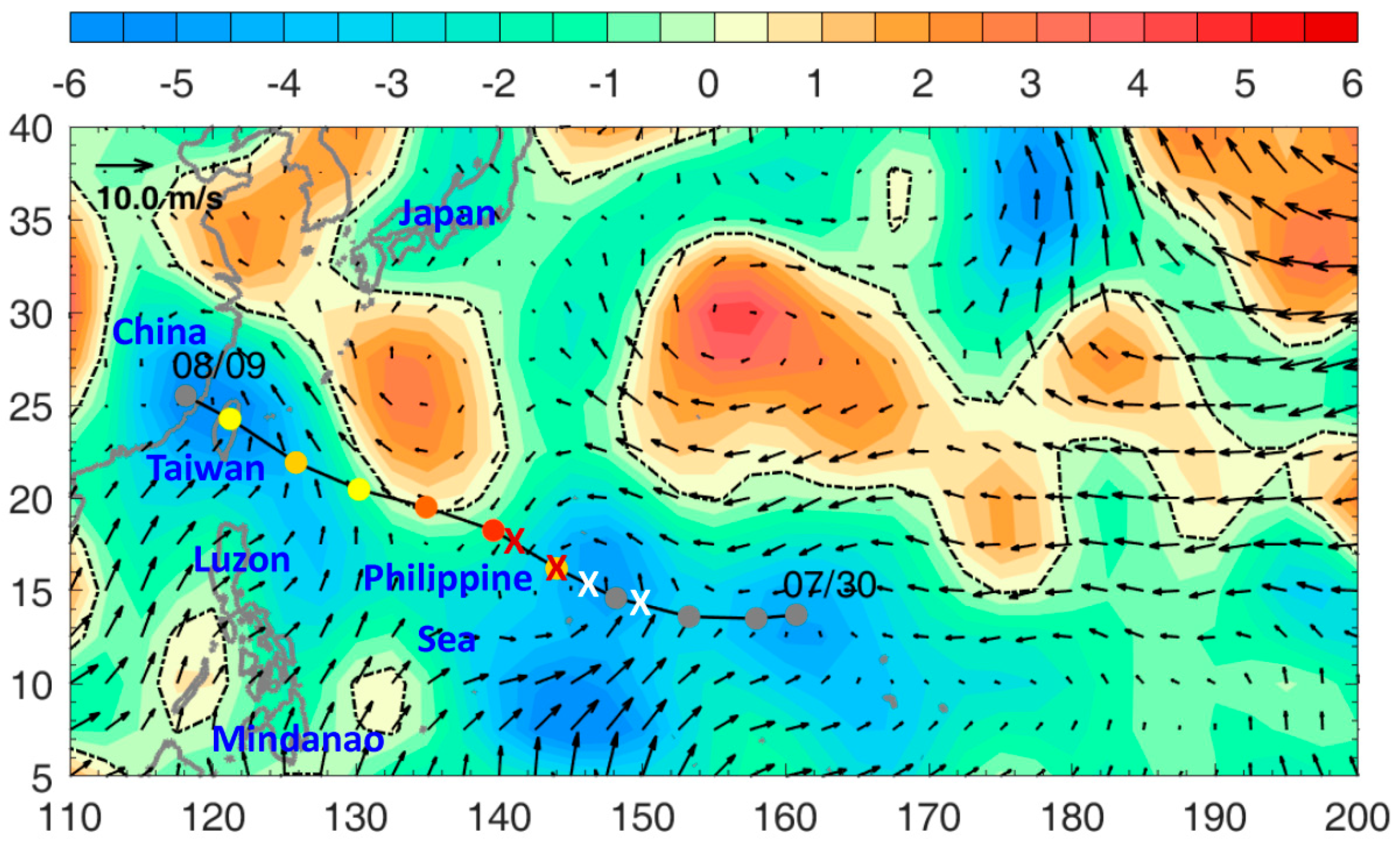


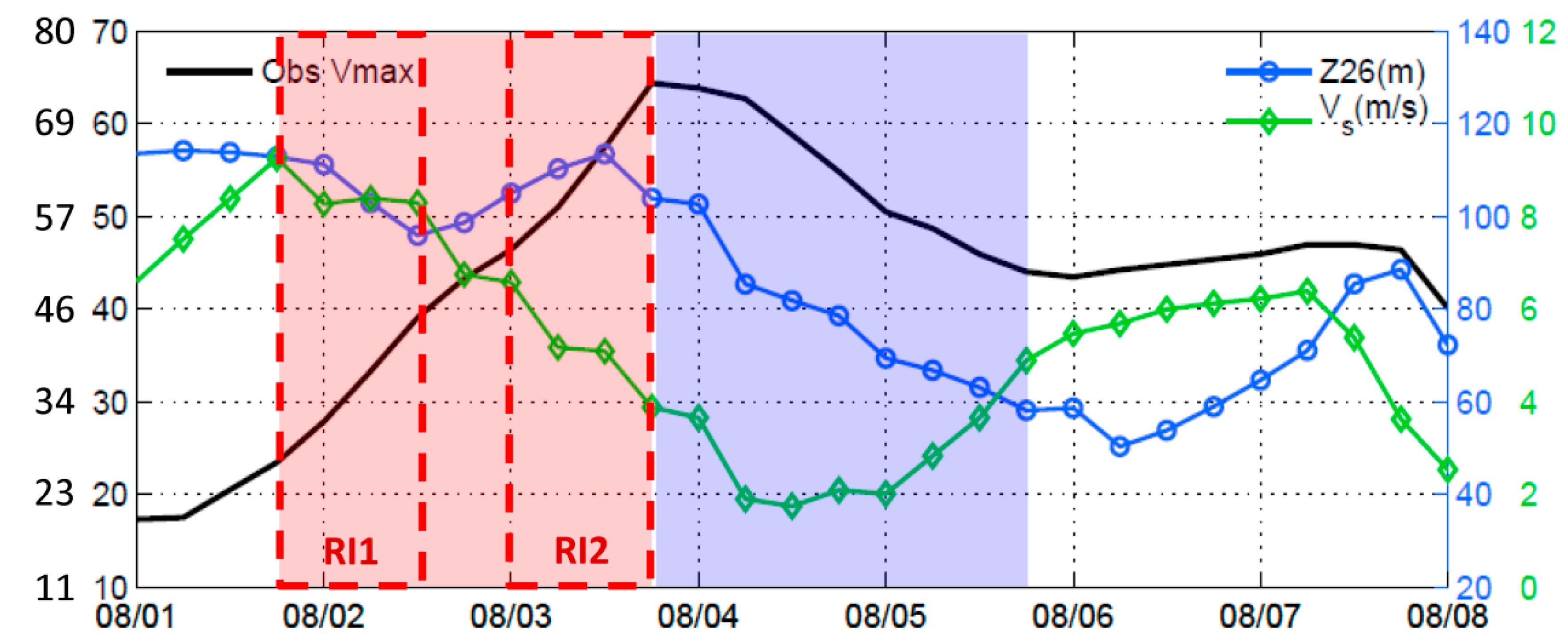
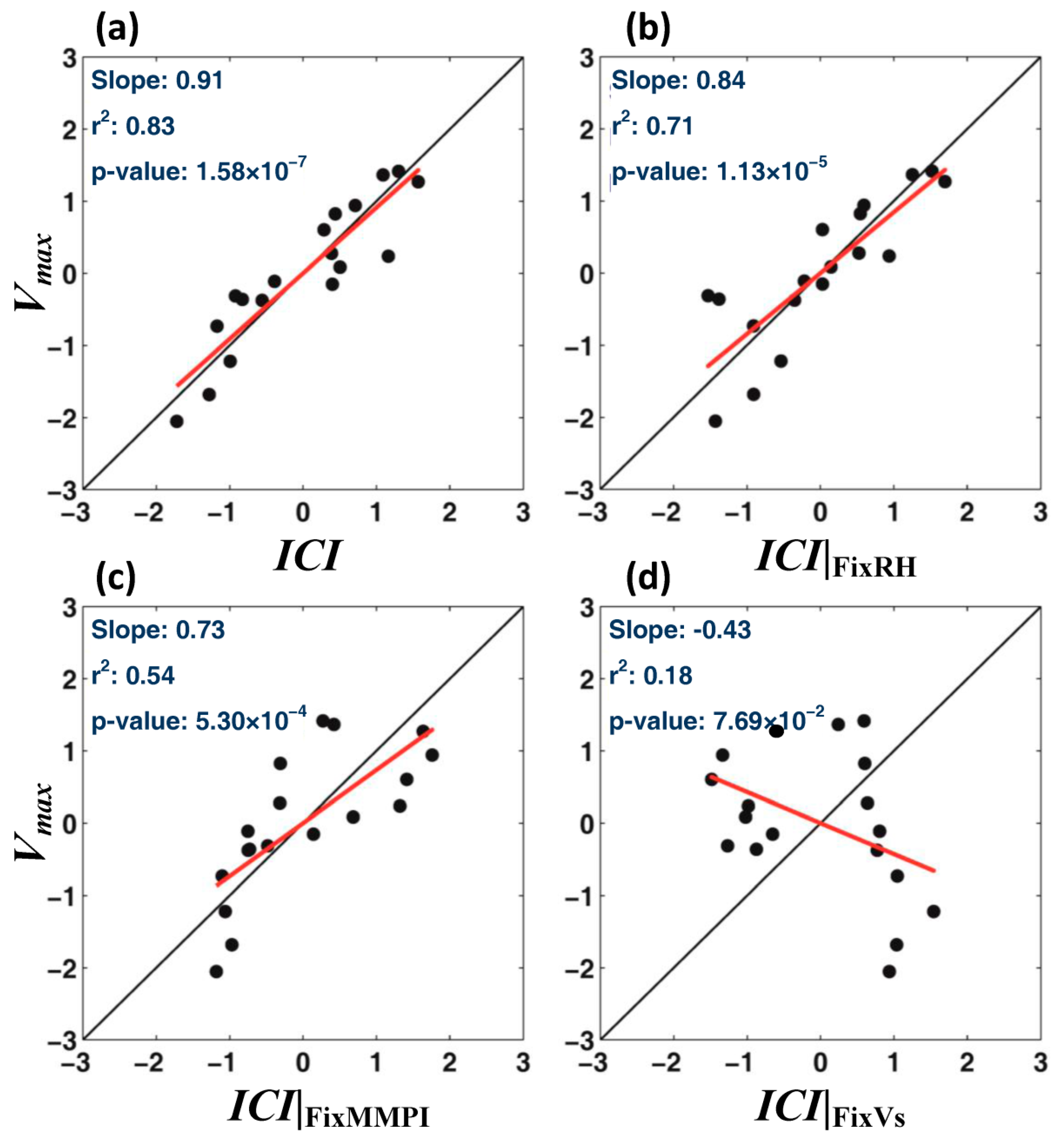
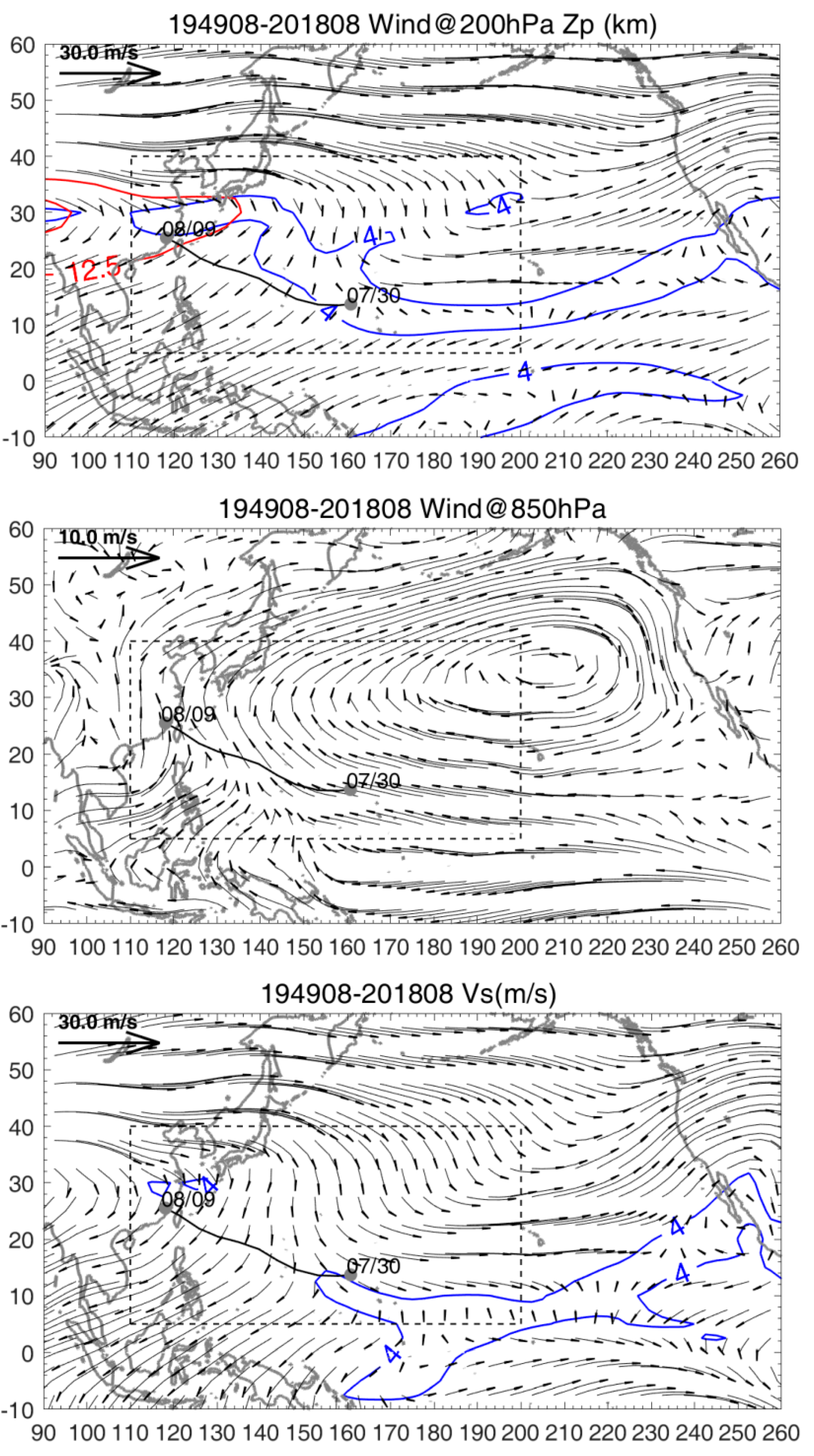
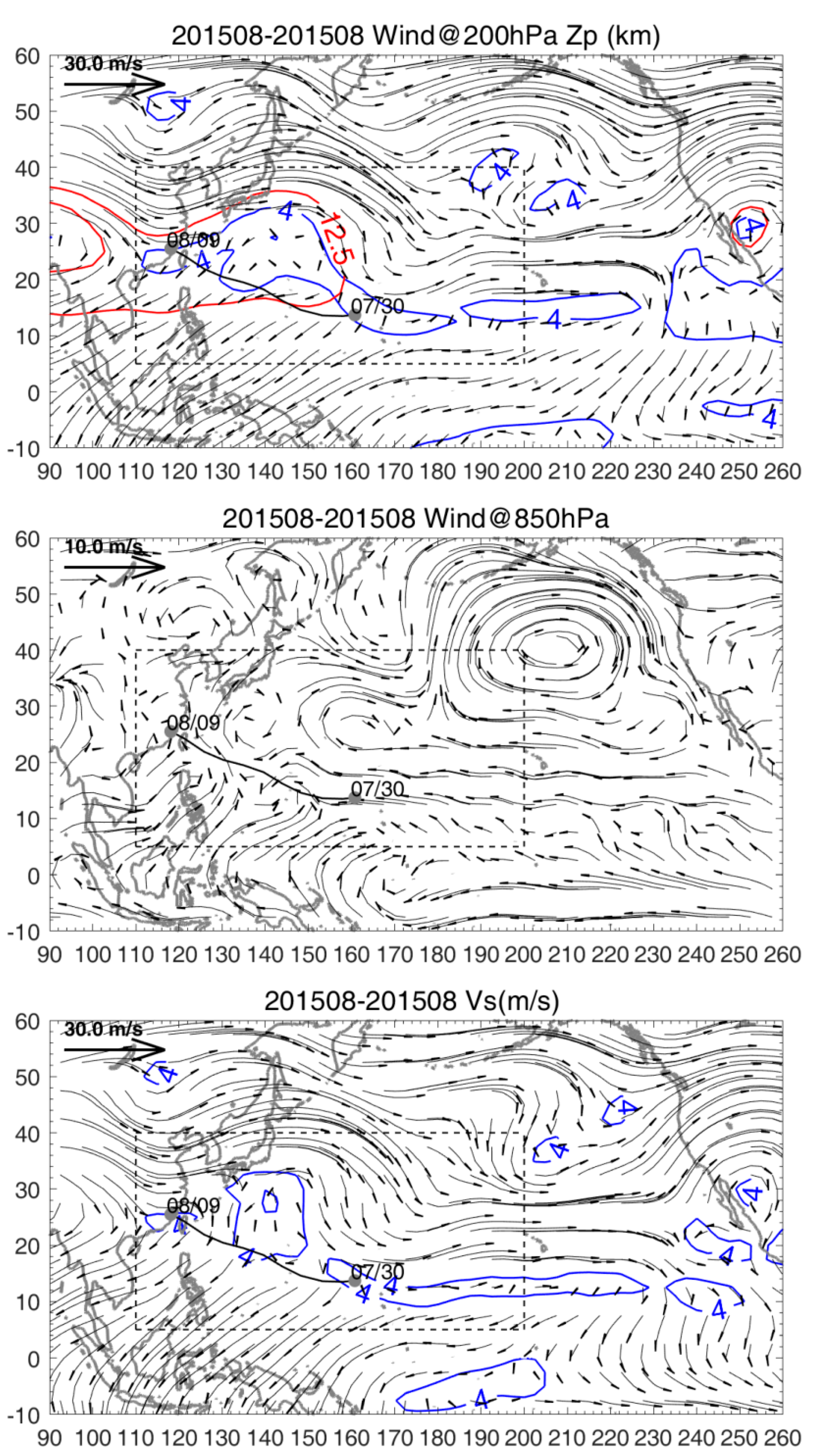
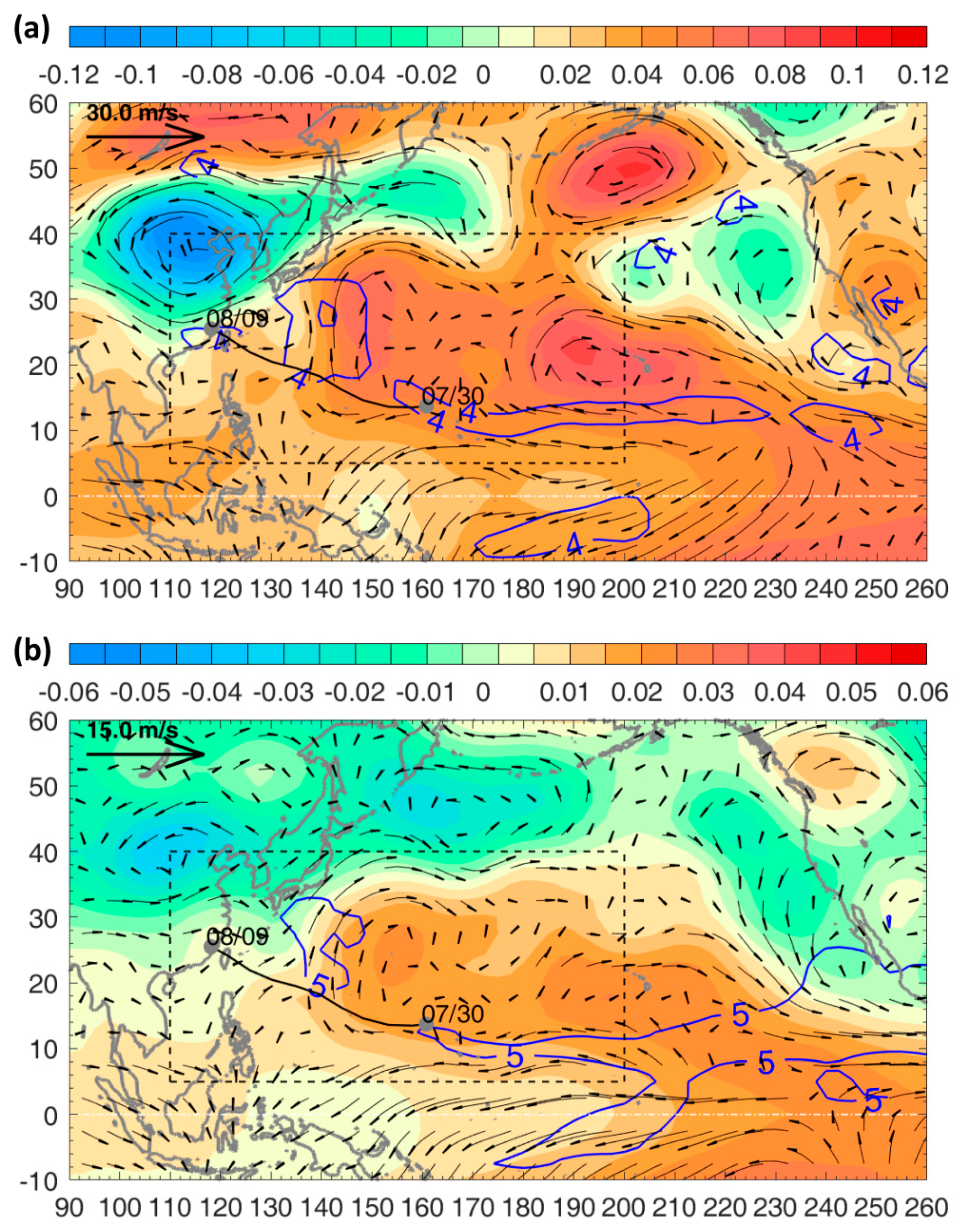

Publisher’s Note: MDPI stays neutral with regard to jurisdictional claims in published maps and institutional affiliations. |
© 2021 by the authors. Licensee MDPI, Basel, Switzerland. This article is an open access article distributed under the terms and conditions of the Creative Commons Attribution (CC BY) license (http://creativecommons.org/licenses/by/4.0/).
Share and Cite
Oey, L.; Lin, Y. The Influence of Environments on the Intensity Change of Typhoon Soudelor. Atmosphere 2021, 12, 162. https://doi.org/10.3390/atmos12020162
Oey L, Lin Y. The Influence of Environments on the Intensity Change of Typhoon Soudelor. Atmosphere. 2021; 12(2):162. https://doi.org/10.3390/atmos12020162
Chicago/Turabian StyleOey, Leo, and Yuchen Lin. 2021. "The Influence of Environments on the Intensity Change of Typhoon Soudelor" Atmosphere 12, no. 2: 162. https://doi.org/10.3390/atmos12020162
APA StyleOey, L., & Lin, Y. (2021). The Influence of Environments on the Intensity Change of Typhoon Soudelor. Atmosphere, 12(2), 162. https://doi.org/10.3390/atmos12020162





